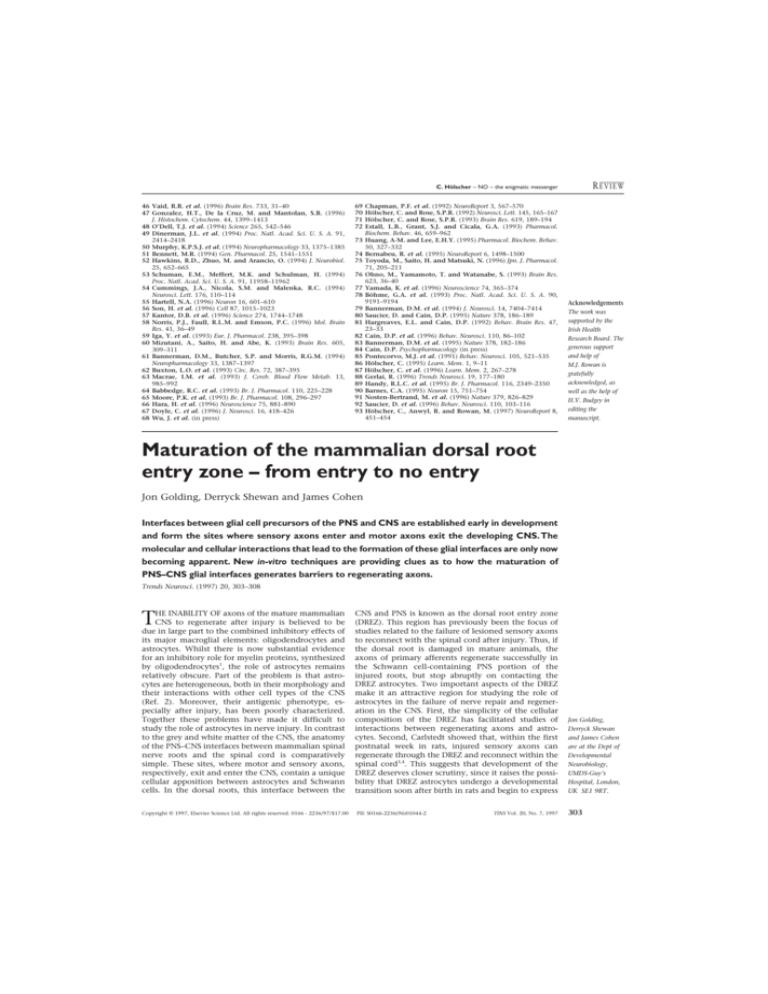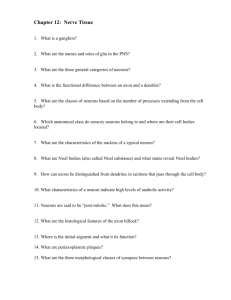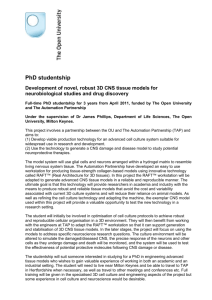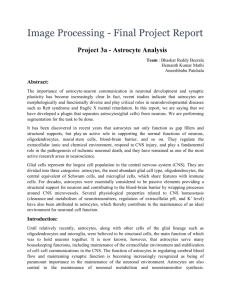
REVIEW
C. Hölscher – NO – the enigmatic messenger
46 Vaid, R.R. et al. (1996) Brain Res. 733, 31–40
47 Gonzalez, H.T., De la Cruz, M. and Mantolan, S.B. (1996)
J. Histochem. Cytochem. 44, 1399–1413
48 O’Dell, T.J. et al. (1994) Science 265, 542–546
49 Dinerman, J.L. et al. (1994) Proc. Natl. Acad. Sci. U. S. A. 91,
2414–2418
50 Murphy, K.P.S.J. et al. (1994) Neuropharmacology 33, 1375–1385
51 Bennett, M.R. (1994) Gen. Pharmacol. 25, 1541–1551
52 Hawkins, R.D., Zhuo, M. and Arancio, O. (1994) J. Neurobiol.
25, 652–665
53 Schuman, E.M., Meffert, M.K. and Schulman, H. (1994)
Proc. Natl. Acad. Sci. U. S. A. 91, 11958–11962
54 Cummings, J.A., Nicola, S.M. and Malenka, R.C. (1994)
Neurosci. Lett. 176, 110–114
55 Hartell, N.A. (1996) Neuron 16, 601–610
56 Son, H. et al. (1996) Cell 87, 1015–1023
57 Kantor, D.B. et al. (1996) Science 274, 1744–1748
58 Norris, P.J., Faull, R.L.M. and Emson, P.C. (1996) Mol. Brain
Res. 41, 36–49
59 Iga, Y. et al. (1993) Eur. J. Pharmacol. 238, 395–398
60 Mizutani, A., Saito, H. and Abe, K. (1993) Brain Res. 605,
309–311
61 Bannerman, D.M., Butcher, S.P. and Morris, R.G.M. (1994)
Neuropharmacology 33, 1387–1397
62 Buxton, L.O. et al. (1993) Circ. Res. 72, 387–395
63 Macrae, I.M. et al. (1993) J. Cereb. Blood Flow Metab. 13,
985–992
64 Babbedge, R.C. et al. (1993) Br. J. Pharmacol. 110, 225–228
65 Moore, P.K. et al. (1993) Br. J. Pharmacol. 108, 296–297
66 Hara, H. et al. (1996) Neuroscience 75, 881–890
67 Doyle, C. et al. (1996) J. Neurosci. 16, 418–426
68 Wu, J. et al. (in press)
69
70
71
72
73
74
75
76
77
78
79
80
81
82
83
84
85
86
87
88
89
90
91
92
93
Chapman, P.F. et al. (1992) NeuroReport 3, 567–570
Hölscher, C. and Rose, S.P.R. (1992) Neurosci. Lett. 145, 165–167
Hölscher, C. and Rose, S.P.R. (1993) Brain Res. 619, 189–194
Estall, L.B., Grant, S.J. and Cicala, G.A. (1993) Pharmacol.
Biochem. Behav. 46, 659–962
Huang, A-M. and Lee, E.H.Y. (1995) Pharmacol. Biochem. Behav.
50, 327–332
Bernabeu, R. et al. (1995) NeuroReport 6, 1498–1500
Toyoda, M., Saito, H. and Matsuki, N. (1996) Jpn. J. Pharmacol.
71, 205–211
Ohno, M., Yamamoto, T. and Watanabe, S. (1993) Brain Res.
623, 36–40
Yamada, K. et al. (1996) Neuroscience 74, 365–374
Böhme, G.A. et al. (1993) Proc. Natl. Acad. Sci. U. S. A. 90,
9191–9194
Bannerman, D.M. et al. (1994) J. Neurosci. 14, 7404–7414
Saucier, D. and Cain, D.P. (1995) Nature 378, 186–189
Hargreaves, E.L. and Cain, D.P. (1992) Behav. Brain Res. 47,
23–33
Cain, D.P. et al. (1996) Behav. Neurosci. 110, 86–102
Bannerman, D.M. et al. (1995) Nature 378, 182–186
Cain, D.P. Psychopharmacology (in press)
Pontecorvo, M.J. et al. (1991) Behav. Neurosci. 105, 521–535
Hölscher, C. (1995) Learn. Mem. 1, 9–11
Hölscher, C. et al. (1996) Learn. Mem. 2, 267–278
Gerlai, R. (1996) Trends Neurosci. 19, 177–180
Handy, R.L.C. et al. (1995) Br. J. Pharmacol. 116, 2349–2350
Barnes, C.A. (1995) Neuron 15, 751–754
Nosten-Bertrand, M. et al. (1996) Nature 379, 826–829
Saucier, D. et al. (1996) Behav. Neurosci. 110, 103–116
Hölscher, C., Anwyl, R. and Rowan, M. (1997) NeuroReport 8,
451–454
Acknowledgements
The work was
supported by the
Irish Health
Research Board. The
generous support
and help of
M.J. Rowan is
gratefully
acknowledged, as
well as the help of
H.V. Budgey in
editing the
manuscript.
Maturation of the mammalian dorsal root
entry zone – from entry to no entry
Jon Golding, Derryck Shewan and James Cohen
Interfaces between glial cell precursors of the PNS and CNS are established early in development
and form the sites where sensory axons enter and motor axons exit the developing CNS. The
molecular and cellular interactions that lead to the formation of these glial interfaces are only now
becoming apparent. New in-vitro techniques are providing clues as to how the maturation of
PNS–CNS glial interfaces generates barriers to regenerating axons.
Trends Neurosci. (1997) 20, 303–308
T
HE INABILITY OF axons of the mature mammalian
CNS to regenerate after injury is believed to be
due in large part to the combined inhibitory effects of
its major macroglial elements: oligodendrocytes and
astrocytes. Whilst there is now substantial evidence
for an inhibitory role for myelin proteins, synthesized
by oligodendrocytes1, the role of astrocytes remains
relatively obscure. Part of the problem is that astrocytes are heterogeneous, both in their morphology and
their interactions with other cell types of the CNS
(Ref. 2). Moreover, their antigenic phenotype, especially after injury, has been poorly characterized.
Together these problems have made it difficult to
study the role of astrocytes in nerve injury. In contrast
to the grey and white matter of the CNS, the anatomy
of the PNS–CNS interfaces between mammalian spinal
nerve roots and the spinal cord is comparatively
simple. These sites, where motor and sensory axons,
respectively, exit and enter the CNS, contain a unique
cellular apposition between astrocytes and Schwann
cells. In the dorsal roots, this interface between the
Copyright © 1997, Elsevier Science Ltd. All rights reserved. 0166 - 2236/97/$17.00
CNS and PNS is known as the dorsal root entry zone
(DREZ). This region has previously been the focus of
studies related to the failure of lesioned sensory axons
to reconnect with the spinal cord after injury. Thus, if
the dorsal root is damaged in mature animals, the
axons of primary afferents regenerate successfully in
the Schwann cell-containing PNS portion of the
injured roots, but stop abruptly on contacting the
DREZ astrocytes. Two important aspects of the DREZ
make it an attractive region for studying the role of
astrocytes in the failure of nerve repair and regeneration in the CNS. First, the simplicity of the cellular
composition of the DREZ has facilitated studies of
interactions between regenerating axons and astrocytes. Second, Carlstedt showed that, within the first
postnatal week in rats, injured sensory axons can
regenerate through the DREZ and reconnect within the
spinal cord3,4. This suggests that development of the
DREZ deserves closer scrutiny, since it raises the possibility that DREZ astrocytes undergo a developmental
transition soon after birth in rats and begin to express
PII: S0166-2236(96)01044-2
TINS Vol. 20, No. 7, 1997
Jon Golding,
Derryck Shewan
and James Cohen
are at the Dept of
Developmental
Neurobiology,
UMDS-Guy’s
Hospital, London,
UK SE1 9RT.
303
REVIEW
J. Golding et al. – Axon growth and regeneration across PNS–CNS glial interfaces
molecules that repel growing axons. What is the basis
for the change in the properties of PNS–CNS glial
interfaces, from a conduit for growing axons in development, to a ‘barrier’ to their reconnection to the
mature spinal cord after injury? Here, we first describe
what is known of the origins of glial interfaces in early
development, and their influence on the formation of
axon exit and entry points along the neuraxis. We
then review recent progress in identifying the cellular
and molecular components of the DREZ that might
confer its barrier properties.
The formation of PNS–CNS glial interfaces
Astrocytes and Schwann cells have different embryological origins in vertebrate development: from neural
tube and neural crest, respectively. PNS–CNS glial
interfaces arise at the surface of the neural tube,
potentially by a tripartite interaction between cells
derived from the neural crest, the processes of neuroepithelial cells, and the intervening basal lamina of
the neural tube. Of these, the contribution of neuralcrest cells has been the best characterized. In the
chick, Le Douarin et al.5 have shown that a subset of
neural-crest cells, migrating in the ventrolateral pathway alongside the neural tube, take part in the formation
of exit–entry points (Fig. 1A,B). This subset is a latemigrating population that selectively expresses c-cad7,
a member of the cadherin family of cell-adhesion molecules, initially in the dorsal midbrain at stage 10, and
then progressively further caudally along the neuraxis6. These c-cad7-positive cells contribute to the
formation of ‘boundary caps’, delineating the sites of
presumptive exit–entry points (Fig. 1C). Once they
adhere, neural-crest cells might breach the basal lamina of the neural tube by secreting proteases7,8, since
they are thought to degrade the basal lamina of ectoderm in this way9. Although these neural-crest cells
are the earliest reported markers of developing
exit–entry points, it is possible that restricted domains
of the basal lamina of the neural tube define the sites
where the migrating c-cad7-expressing neural-crest
cells arrest. Thus, the function of c-cad7 might be to
aggregate neural-crest cells, ensuring coherent migration to the same loci, but the signals to stop migration
at specific points on the neural tube are possibly mediated by distinct adhesive mechanisms10. A further
possibility is that specific groups of neuroepithelial
cells differentiate at the presumptive exit–entry points
and degrade the basal lamina by secreting proteases
themselves or by inducing the attachment of neuralcrest cells, or both. Thus, a population of chick neuroepithelial cells at the prospective ventral exit points
penetrate the basal lamina of the neural tube at stage
17, when the first motor axons emerge from the
ventral exit points11. In particular, matrix metalloproteinases (MMPs) specific for glycoprotein substrates of
the extracellular matrix (ECM) might be involved,
such as the MMP Stromelysin-1, which is expressed by
neuroepithelial cells in the chick12.
A recent study further implicates neuroepithelium
in determining positional specification of exit–entry
points. Niederländer and Lumsden13 excised neural
crest from rhombomere (r)3, in which an exit–entry
point does not arise, in a stage-10–11 chick host, and
transplanted age-matched quail neural crest from r4,
in which the exit–entry point of the facial nerve normally develops. However, this failed to generate an
304
TINS Vol. 20, No. 7, 1997
inappropriate exit–entry point in r3 of the host,
implying that the initial signals for exit–entry point
formation are derived from neuroepithelium and not
neural crest.
Glial interfaces, generated as a result of such cellular interactions, can be grouped into three categories.
Most Schwann cell–CNS glial interfaces are segregated
into distinct dorsal (sensory-axon) entry points and
ventral (motor-axon) exit points (Fig. 1D). However,
in some regions of the hindbrain, motor and sensory
axons exit or enter the CNS at common sites14 (Fig. 1E),
whilst in others, distinct exit points for ventral motor
axons are also produced (for example, cranial nerves
VI and XII) (Fig. 1F). This pattern is also evident in the
cervical spinal cord, where common dorsal exit–entry
points are produced transiently during development,
while distinct ventral motor-axon exit points also
arise15,16 (Fig. 1F).
Development of PNS–CNS glial interfaces and
interactions with axons
Although the changes in antigenic phenotype associated with the maturation of CNS glial cells and
Schwann cell precursors have been well documented,
few studies have focused specifically on developing
glia at PNS–CNS interfaces. Boundary-cap cells in the
trunk region of the mouse are the first neural-crest
cells at this axial level to express the transcription factor Krox20 [at embryonic day (E)10.5] and subsequently to become positive for S-100, a marker of differentiated Schwann cells, by E12.5 (Ref. 17). Early
phenotypic changes specific to CNS glia at such interfaces have not been reported. However, in the rat
spinal cord, the only definitive astrocytic marker, the
cytoskeletal protein GFAP, is first detected in the
distal processes of radial glia at the margins of the
ventral, then dorsal spinal cord, at E16 and E19 respectively18, coincident with the growth of the final
cohort of axons through the glial interfaces in these
regions. Could these studies imply that the Schwann
cells and CNS glia that populate the interfaces mature
before glia elsewhere in the nervous system?
Precocious development might be required for appropriate interactions to take place between the earliest
arriving axons and the glial cells at PNS–CNS interfaces. Thus, it is known that in the case of primary
afferents, there occurs a protracted ‘waiting period’
at the surface of the dorsal grey matter, in the vicinity
of the DREZ. Recent work suggests that this stalling
of axons is regulated by the local expression of
SemIII (D), a member of the semaphorin family19–21. In
the mouse, neurotrophin 3 (NT3)-dependent muscle
sensory afferents are the first to grow into the grey
matter of the spinal cord at E14.5, to reach their
ventral motoneurone targets, coinciding with the age
at which the growth of their axons becomes insensitive to the repulsive effects of SemD in tissue culture.
In contrast, NGF-dependent small-diameter afferents,
whose growth continues to be inhibited by SemD
in vitro, grow into their target fields within the superficial laminae of the dorsal horn at E17.5, only after
expression of SemD mRNA in the spinal cord has
receded ventrally. In addition, another semaphorin,
SemA, is expressed in the nerve roots of the mouse
trunk between E12.5 and E14.5, and thus by analogy,
might also be involved in confining the growth of
sensory afferents22.
REVIEW
J. Golding et al. – Axon growth and regeneration across PNS–CNS glial interfaces
Postnatal changes at the DREZ generate a barrier
to axon growth
Shortly after birth, changes occur in the organization of the mammalian DREZ that might be correlated
with the inability of regenerating primary sensory
axons to re-enter the spinal cord after injury.
Astrocytes extend processes up to 100 mm into the
dorsal roots between basal lamina tubes of Schwann
cells, and gaps are present in this intervening basal
lamina at the DREZ (Ref. 23). This organization is not
only thought to confer mechanical strength on the
DREZ (Ref. 24), but also increases the surface area of
direct contact between Schwann cells and astrocytes,
generating a unique environment at the interface25.
Moreover, this cellular organization ensures that
astrocytic processes are the first CNS elements that are
encountered by regenerating primary sensory axons.
In key experiments carried out by Carlstedt3,4 on the
influence of age on the ability of injured rat sensory
afferents to reconnect with the spinal cord, a ‘critical
period’ was identified, between birth and one week,
when significant numbers of injured axons were able
to regenerate into the cord. In older animals, regenerating labelled axons were observed stopping at, or
turning back from, the DREZ. Electron microscopic
studies in adult rats have shown that regenerating
axons stop growing precisely at the astrocytic
processes within the DREZ (Ref. 26). Growth cones
that contact DREZ astrocytes exhibit ultrastructural
features that are more reminiscent of presynaptic endings than advancing growth cones26. These studies
suggested that contact with mature DREZ astrocytes
might activate a ‘physiological stop pathway’26 within
the neurones, which is proposed to be analogous to
the mechanisms whereby growth cones stop at their
appropriate targets27,28.
Further evidence for the role of mature astrocytes in
preventing regenerating axons (and possibly Schwann
cells) from crossing the DREZ is also provided by
experiments in which the dorsal spinal cord of the rat
is depleted of glia by X-irradiation soon after birth.
This treatment generates gaps in the glial limitans
through which Schwann cells migrate ectopically into
the spinal cord along astrocyte- and oligodendrocytefree sensory afferents29. Invasion by Schwann cells is
limited to the glia-depleted areas of the CNS and the
few remaining astrocytes appear to block the further
migration of Schwann cells. Examination of dorsal
root lesions that had been generated two weeks
after X-irradiation revealed that several regenerating
sensory axons entered the spinal cord through the
astrocyte-free DREZ (Ref. 30).
What is known of the identity of the molecules that
might contribute to the DREZ barrier? Tenascin and
sulphated proteoglycans have been implicated as
inhibitors of axon growth that are expressed by DREZ
astrocytes31 and in other regions of the developing
CNS (Refs 32,33). Thus, Silver et al. reported that both
tenascin and sulphated proteoglycans become concentrated at the CNS side of the rat DREZ towards the
end of the critical period31, although a later study indicated that tenascin mRNA and protein are strongly
expressed by rat DREZ astrocytes from birth34.
Following injury to the dorsal root in rats older than
the critical age, these molecules become highly concentrated at the DREZ and within proximal regions of
the dorsal horn31, in association with extensively
A
Neural
tube
B
Developing
sensory
ganglion
Neural-crest cell
c-cad7-expressing
neural-crest cell
Neuroepithelial cell
Motor neurone
Developing
exit points
Basal lamina
C
D
E
F
Trunk
spinal cord
Hindbrain
Hindbrain or cervical
spinal cord
Fig. 1. Development of PNS–CNS glial interfaces. (A,B) Schematic
transverse sections through the neural tube that illustrate the formation
of the PNS–CNS glial interface. The earliest known marker of prospective
PNS–CNS glial interfaces is the cadherin c-cad7. A subpopulation of
c-cad7-expressing neural-crest cells migrate as a group from the dorsal
surface of the neural tube (A) to form boundary caps, the sites where
PNS–CNS glial interfaces ultimately develop (B). Neural-crest cells,
neuroepithelium, the basal lamina of the neural tube and axons (some
projecting only transiently, dotted line) can all contribute to the
formation of glial interfaces, as summarized in B. (C) In a transverse
section through the chick hindbrain at stage 16, in-situ hybridization
identifies a c-cad7-expressing subpopulation of neural-crest cells that
are forming boundary caps. Scale bar, 50 mm. Photo courtesy of
C. Niederländer. (D) In the trunk regions, glial interfaces are segregated into distinct dorsal (sensory-axon) entry and ventral (motoraxon) exit points. (E,F) However, at some levels of the hindbrain,
common dorsal exit–entry points for branchial motor and sensory axons
are formed (E) whilst at other hindbrain levels and in the cervical spinal
cord, common dorsal exit–entry points as well as ventral exit points are
formed (F).
branched ‘reactive’ astrocytes35. Reactive astrocytes are
a major component of the glial scars that are formed
around CNS lesions in adult rats, and through which
axons fail to regenerate1,36.
In vitro, myelin-free plasma membranes isolated
from glial scars in lesioned brains of adult rats have
been shown to inhibit the growth of neurites from
dorsal root ganglia, and septal and hippocampal
TINS Vol. 20, No. 7, 1997
305
REVIEW
A
J. Golding et al. – Axon growth and regeneration across PNS–CNS glial interfaces
B
resents the one that they would
encounter in vivo. The ECM and
cell-surface molecules are preserved, whilst cells within the
frozen tissue are non-viable and are
no longer able to secrete soluble
Dorsal
factors. This allows the differential
roots
effects of substrate and soluble
factors to be studied. By preparing
longitudinal cryostat sections of
Grey matter
Ventral root
the dorsal spinal cord of the rat, it
D
has been possible to incorporate
Dorsal root
the DREZ and attached dorsal roots
entry zone
and use these as substrates for
(DREZ)
cultures of dissociated neurones44
Rostral
of the dorsal root ganglia (Fig. 2).
Neurones that adhere to the dorsal
Dissociated
roots extend neurites along the
DRG neurones
basal lamina tubes of Schwann
C cells towards the DREZ, as they
would in vivo, where they might
grow across to the spinal cord,
Cryosection
stop, or turn back along the dorsal
root. A major advantage of this
approach is that DREZ from
Neonatal DRG neurone
various developmental stages, both
on adult DREZ cryosection after immunolabelling
before and after the hypothesized
Fig. 2. Axon interactions with the dorsal root entry zone (DREZ) can be modelled in vitro, using cryoculture. In this critical period, can be employed as
technique, uninjured spinal cord, taken from rats of various ages (A), is cut into thin (8–10 mm) longitudinal sections substrates, enabling us to study
on a cryostat (B). These sections are transferred to sterile glass coverslips and are used as substrates for the growth of more closely how the development
neurites from dissociated neurones of rat dorsal root ganglia (DRG) (C). After 18 h, the cultures are fixed and stained of this region influences neurite
(D) with antibodies against: laminin to label the basal lamina tubes of the Schwann cells of the dorsal roots (in green),
growth. Thus, we have found that
GFAP to label astrocytes within the CNS (in blue) and GAP-43 to label growing neurites and their cell bodies (in red).
neurites growing from neurones of
Neurites from neurones of postnatal DRG grow well along the dorsal roots, but stop at the PNS–CNS interface of the
adult DREZ, mimicking closely the behaviour of regenerating axons after a prior lesion in vivo. Abbreviation: P0, new- neonatal dorsal root ganglia cross
the newborn (postnatal day 0, P0)
born, postnatal day 0.
DREZ more readily than P6 or adult
DREZ (Fig. 3A,B). This supports the
neurones of embryonic rat, whilst membranes isolated idea that inhibitors of axon growth appear at the
from uninjured brains supported neurite outgrowth37. DREZ during a critical period within the first postnatal
This growth-inhibitory effect could be removed by week3,4 that is independent of injury-induced
pretreatment with proteoglycan-degrading enzymes37. responses by glial cells. This might indicate that the
Furthermore, purified chondroitin-sulphate proteo- sulphated proteoglycans that accumulate at the DREZ
glycans38 and tenascin39 have been shown to act as by P6 are sufficient to halt growing primary sensory
barriers to growth of CNS neurites in vitro when pre- axons, but the possibility remains that other, as yet
sented as sharp substrate boundaries. However, the uncharacterized, molecules might also be involved.
increased expression of inhibitory molecules is only Significantly, neurite outgrowth on the spinal cord or
one possible mechanism that might account for the dorsal root, immediately central or peripheral to the
failure of axon growth at the mature DREZ. Another DREZ, was similar at different ages that encompassed
possibility is that maturation of astrocytes, both in the critical period, suggesting that changes intrinsic to
vivo and in vitro, might downregulate the production the DREZ are initially responsible for developing a
of cell-adhesion molecules that promote axon barrier to regenerating axons. By adulthood, both the
growth40, in tandem with the upregulation of barrier DREZ and the CNS adjacent to it were poor substrates
molecules.This raises the question of whether matu- for outgrowth of neurites of the neonatal dorsal root
rational changes that are intrinsic to normal astro- ganglia, suggesting that after the critical period adcytes are themselves responsible for the acquisition of ditional inhibitory molecules become expressed
generally within the CNS.
barrier properties at the DREZ.
Cryoculture
306
Plane of
section
Cryosection
Culture model systems enable the interaction of
axons with the DREZ to be studied in novel ways
Influence of age of neurones on their interactions
with the DREZ
To test whether maturing astrocytes acquire the
ability to inhibit axon growth, it is necessary to confront growing primary sensory axons with the uninjured DREZ, a scenario that is impossible in vivo.
However, this has been made possible by adapting an
in-vitro cryoculture approach41–43. In this technique,
sensory neurones are cultured on thin cryostat sections of nerve tissue, an environment that closely rep-
By testing a range of ages of neurones in cryoculture, we were also able to analyse separately the influence of development of neurones of the dorsal root
ganglia on the ability of neurites to cross the DREZ.
We found that neurites from early embryonic neurones were less sensitive to the P6 DREZ inhibitors44
(Fig. 3C) than neurites from more mature neurones,
suggesting that, in tandem with changes at the DREZ
TINS Vol. 20, No. 7, 1997
REVIEW
J. Golding et al. – Axon growth and regeneration across PNS–CNS glial interfaces
In vivo
Some injured DRG
axons regenerate
through the DREZ
DREZ
Reactive
gliosis
Regenerating DRG
axons fail to cross
the DREZ
DR injury
site
DR injury
site
DRG
DRG
Neonatal rhizotomy
Mature rhizotomy
Cryoculture model
Astrocyte
(growth permissive)
Oligodendrocytes
Astrocyte processes extend into DR,
increasing the width of the DREZ,
and become growth inhibitory
P
P
Postnatal (P)
or embryonic (E)
DRG neurones
E
CNS DREZ
DR
Neonatal cryosection
Fig. 3. An in-vitro model of the dorsal root entry zone (DREZ) replicates in-vivo observations. The critical period for regeneration of primary sensory axons across the DREZ in vivo might be dependent upon
developmental changes that occur both at the DREZ and within neurones of dorsal root ganglia (DRG). Cryosections of uninjured spinal
cord, incorporating dorsal roots and DREZ from newborn (P0) (A) or
postnatal day 6 (P6) (B) rats were used as substrates for the growth of
neurites from DRG neurones of the P0 rat. Neurites (labelled red with
anti-GAP-43 antibody and arrowed in A) consistently cross the P0 DREZ
more successfully than the P6 DREZ (dotted line, between anti-lamininstained endoneural tubes of Schwann cells and the spinal cord), while
their growth on P0 and P6 spinal cord adjacent to the DREZ is similar.
Because the DREZ substrates are taken from uninjured animals, this
suggests that during the first postnatal week, changes intrinsic to the
DREZ generate an environment that is inhibitory for axon growth.
Although the P6 DREZ inhibits neurite crossing by postnatal DRG neurones, neurites from embryonic (E15) DRG neurones are less sensitive to this
barrier (arrow in C), suggesting that developmental changes in neuronal
receptors are also important for the generation of a barrier to growing
axons at the DREZ. Scale bars, 70 mm (A and B), 50 mm (C).
during the critical period, there are corresponding
maturational changes in the expression of axonal
receptors for ligands that influence growth. A parallel
E
CNS DREZ
DR
Mature cryosection
Fig. 4. In vivo and in vitro experimental models of the rat dorsal root entry zone (DREZ).
Both approaches demonstrate a critical neonatal period, between birth and 1 week postnatally, during which regenerating primary sensory axons of dorsal root ganglia (DRG)
can cross the DREZ. This might be due to maturational or injury-induced changes at the DREZ,
or both. As the rat matures postnatally, astrocytic processes (but not oligodendrocytes) extend
into the dorsal root (DR) (bottom panels), expanding the region of contact between astrocytes
and Schwann cells (which defines the DREZ). Molecules that inhibit axon growth might
become concentrated at these contact sites within the DREZ, as indicated by the change in the
DREZ astrocyte surface from green (growth permissive) to red (growth inhibitory). A consequence of DR injury (rhizotomy) after the critical age is a marked gliosis at the DREZ. Molecules
that inhibit axon growth might become associated with these reactive glia (top panels). By
using uninjured spinal cord cryosections to model the DREZ in vitro, it is possible to examine
how DRG axons behave at the neonatal and adult DREZ in the absence of reactive gliosis. As
with the in-vivo studies, postnatal DRG neurones (P) fail to grow neurites across the mature
DREZ, suggesting that maturational changes are primarily involved in generating a barrier to
axon growth at the end of the critical period. When embryonic DRG neurones (E) are applied
to the cryosections, they are able to extend neurites across both the neonatal and mature
DREZ, suggesting that they have yet to acquire functional receptors for the inhibitory DREZ
ligands.
approach in vivo involves transplanting allografts of
embryonic dorsal root ganglia into adult rats. In these
animals some immature axons were found to have
entered the spinal cord of the adult host45, although it
is unclear whether they actually grew through the
DREZ. Both studies are consistent with an emerging
general principle that immature neurones are better
able to extend axons within the mature CNS environment46–50, possibly as a result of their lack of receptors
that recognize inhibitory ligands. The complementary
findings that have been obtained from both in-vivo
and in-vitro studies on maturation of the DREZ are
summarized in Fig. 4.
TINS Vol. 20, No. 7, 1997
307
REVIEW
J. Golding et al. – Axon growth and regeneration across PNS–CNS glial interfaces
Future prospects
Acknowledgements
We are grateful to
Christianne
Niederländer for
Fig. 1C and thank
Anthony Graham
and Kuldip Bedi for
their helpful
comments on the
manuscript. This
work was supported
by Action Research
and the Medical
Research Council.
308
1 Schwab, M.E. and Bartholdi, D. (1996) Physiol. Rev. 76, 319–370
2 Wilkin, G.P., Marriot, D.R. and Cholewinski, A.J. (1990)
Trends Neurosci. 13, 43–46
3 Carlstedt, T. et al. (1987) Neurosci. Lett. 74, 14–18
4 Carlstedt, T. (1988) J. Neurocytol. 17, 335–350
5 Le Douarin, N.M. et al. (1992) in Sensory Neurons: Diversity,
Development, and Plasticity (Scott, S.A., ed.), pp. 143–170, Oxford
University Press
6 Nakagawa, S. and Takeichi, M. (1995) Development 121,
1321–1332
7 Carroll, P.M. (1994) Development 120, 3173–3183
8 Valinsky, J.E. and Le Douarin, N.M. (1985) EMBO J. 4,
1403–1406
9 Erickson, C.A. et al. (1992) Dev. Biol. 151, 251–272
10 Lallier, T. et al. (1992) Development 116, 531–541
11 Lunn, E.R. et al. (1987) Development 101, 247–254
12 Nordström, L.A. et al. (1995) Mol. Cell. Neurosci. 6, 56–68
13 Niederländer, C. and Lumsden, A. (1996) Development 122,
2367–2374
14 Lumsden, A. and Keynes, R. (1989) Nature 337, 424–428
15 Quebada, P. and Ignatius, M.J. (1995) Soc. Neurosci. Abstr. 21,
1509
16 Tanaka, H. (1991) J. Comp. Neurol. 303, 329–337
17 Murphy, P. et al. (1996) Development 122, 2847–2857
18 Yang, H-Y. et al. (1993) J. Neurocytol. 22, 558–571
19 Messersmith, E.K. et al. (1995) Neuron 14, 949–959
20 Püschel, A.W., Adams, R.H. and Betz, H. (1996) Mol. Cell.
Neurosci. 7, 419–431
21 Wright, D.E. et al. (1995) J. Comp. Neurol. 361, 321–333
22 Püschel, A.W., Adams, R.H. and Betz, H. (1995) Neuron 14,
941–948
23 Berthold, C-H. and Carlstedt, T. (1977) Acta Physiol. Scand.
Suppl. 446, 23–42
24 Livesey, F.J. and Fraher, J.P. (1992) Neuropathol. Appl.
Neurobiol. 18, 376–386
25 Ghirnikar, R.S. and Eng, L.F. (1995) Glia 14, 145–152
26 Liuzzi, F.J. and Lasek, R.J. (1987) Science 237, 642–645
27 Liuzzi, F.J. and Tedeschi, B. (1992) J. Neurosci. 12, 4783–4792
28 Liuzzi, F.J. (1990) Brain Res. 512, 277–283
29 Sims, T.J. and Gilmore, S.A. (1983) Brain Res. 276, 17–30
30 Sims, T.J. and Gilmore, S.A. (1994) Brain Res. 634, 113–126
31 Pindzola, R.R., Doller, C. and Silver, J. (1993) Dev. Biol. 156,
34–48
32 Steindler, D.A. et al. (1989) Dev. Biol. 131, 243–260
33 Snow, D.M., Steindler, D.A. and Silver, J. (1990) Dev. Biol. 138,
359–376
34 Zhang, Y. et al. (1995) J. Neurocytol. 24, 585–601
35 Bignami, A., Chi, N.H. and Dahl, D. (1984) Exp. Neurol. 85,
426–436
36 Reier, P.J., Stensaas, L.J. and Guth, L. (1983) in Spinal Cord
Reconstruction (Kao, C.C., ed.), pp. 163–195, Raven Press
37 Bovolenta, P., Wandosell, F. and Nieto-Sampedro, M. (1993)
Eur. J. Neurosci. 5, 454–465
38 Snow, D.M. et al. (1991) Development 113, 1473–1485
39 Taylor, J., Pesheva, P. and Schachner, M. (1993) J. Neurosci.
Res. 35, 347–362
40 Smith, G.M., Jacobberger, J.W. and Miller, R.H. (1993)
J. Neurochem. 60, 1453–1466
41 Carbonetto, S., Evans, D. and Cochard, P. (1987) J. Neurosci. 7,
610–620
42 Sandrock, A.W., Jr and Matthew, W.D. (1987) Proc. Natl. Acad.
Sci. U. S. A. 86, 6934–6938
43 Shewan, D. et al. (1994) Neuroprotocols 4, 142–145
44 Golding, J.P. et al. (1996) Mol. Cell. Neurosci. 7, 191–203
45 Rosario, C.M. et al. (1993) Exp. Neurol. 120, 16–31
46 Davies, S.J., Field, P.M. and Raisman, G. (1993) Eur. J. Neurosci.
5, 95–106
47 Li, Y. and Raisman, G. (1993) Brain Res. 629, 115–127
48 Shewan, D., Berry, M. and Cohen, J. (1995) J. Neurosci. 15,
2057–2062
49 Wictorin, K. et al. (1990) Neuroscience 37, 301–315
50 Wictorin, K. and Björklund, A. (1992) NeuroReport 3,
1045–1048
51 Cheng, H-J. et al. (1994) Cell 82, 371–381
52 Gale, N.W. et al. (1996) Neuron 17, 9–19
53 Kolodkin, A.L. (1996) Trends Neurosci. 19, 507–513
Letters to the Editor
Book Reviews
Letters to the Editor concerning articles published recently
in TINS are welcome. Please mark clearly whether they are
intended for publication; the authors of the article referred
to are given an opportunity to respond to any of the points
made in the Letter. Maximum length: 500 words. The Editor
reserves the right to edit Letters for publication.
Trends in Neurosciences welcomes books for review.
Please send books or book details to:
Dr Gavin Swanson, Editor, Trends in Neurosciences
68 Hills Road, Cambridge, UK CB2 1LA.
Please address Letters to:
Dr Gavin Swanson, Editor, Trends in Neurosciences,
68 Hills Road, Cambridge, UK CB2 1LA.
If you are interested in reviewing books for TINS, please contact the Editor, Dr Gavin Swanson, with your suggestions.
Tel: +44 1223 315961; Fax: +44 1223 464430.
Current knowledge on the provenance of exit and
entry points of the neural tube is limited, but recent
work suggests that cells of neuroepithelial origin,
rather than of the neural crest, determine the sites
where these points form in development. Further
information on the molecular and structural properties of these immature glial environments should
enlighten us as to the optimal conditions for axon
growth across such interfaces.
The mechanisms that underlie the failure of injured
axons to regenerate across mature interfaces remain
equally elusive. Complementary in-vivo and in-vitro
studies that focus on the DREZ offer the prospect of
circumventing some of the complexity encountered
elsewhere in the CNS, and provide new leads as to the
identity of the molecules responsible. Until recently,
the most likely mechanism involved changes in the
composition of the ECM in the vicinity of the DREZ,
which were proposed to be instrumental in blocking
the reconnection of lesioned primary afferent axons
with the spinal cord. However, the spatiotemporal
pattern of expression of SemD in the developing spinal
cord, and its selective repulsive effects on ingrowth of
sensory afferents, have been invoked more recently
to explain the patterning of primary afferent innervation20. The effects of injuries to the mature CNS on
possible re-expression of SemD within the DREZ and
dorsal horn, and of its cognate receptor on sensory
axons, remain to be determined, but might also be
linked to the failure of afferent re-innervation. Similar
possibilities are raised by the recent demonstration of
the key role played by the Eph-receptor family and
their ligands in regulating the establishment of topographic maps in CNS development51, again mediated
by selective repulsive effects on growing axons. The
continuing elucidation of complementary expression
patterns of Eph receptors and their ligands throughout the nervous system52,53 might help to provide
some of the answers as to why PNS–CNS interfaces
change from entry to no-entry zones.
Selected references
TINS Vol. 20, No. 7, 1997
Publishers
Reviewers









